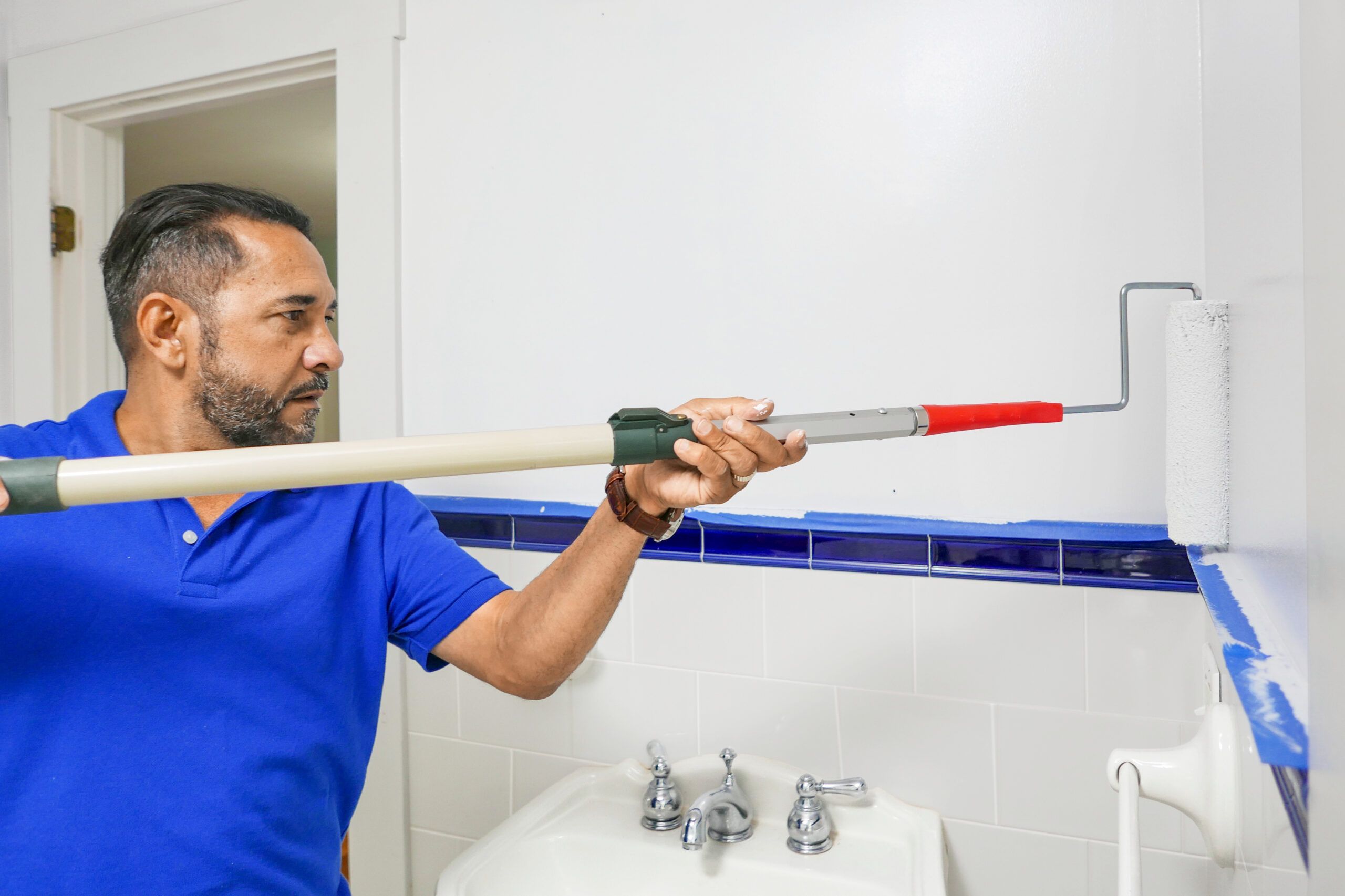Project details
Skill
Cost
Estimated Time
Color changes everything. Or lack of color, if that’s your thing. Point is, everyone knows you can give your drab, washed-out walls a burst of brilliant depth (or wash away your decorating sins with virgin white) just by picking up a paint can and having at them. That’s the power of a coat of paint: It rearranges your reality. This is why painting is the most oft-tackled DIY home-improvement project.
While you don’t have to be a pro to learn how to paint like one, there is more to a good paint job than just slathering some color on the wall. That’s where we come in.
Below, This Old House technical editor Mark Powers shows how to paint a room expertly in one weekend, from the first scratch of the pole sander to the final feather of the brush. And you won’t be wasting time taping off every corner or backtracking with the touch-up brush like an amateur. As long as you stay organized and methodical, you’ll be able to get on with the satisfying business of transforming your room—and with it your whole outlook.
How to Paint a Room in 8 Steps
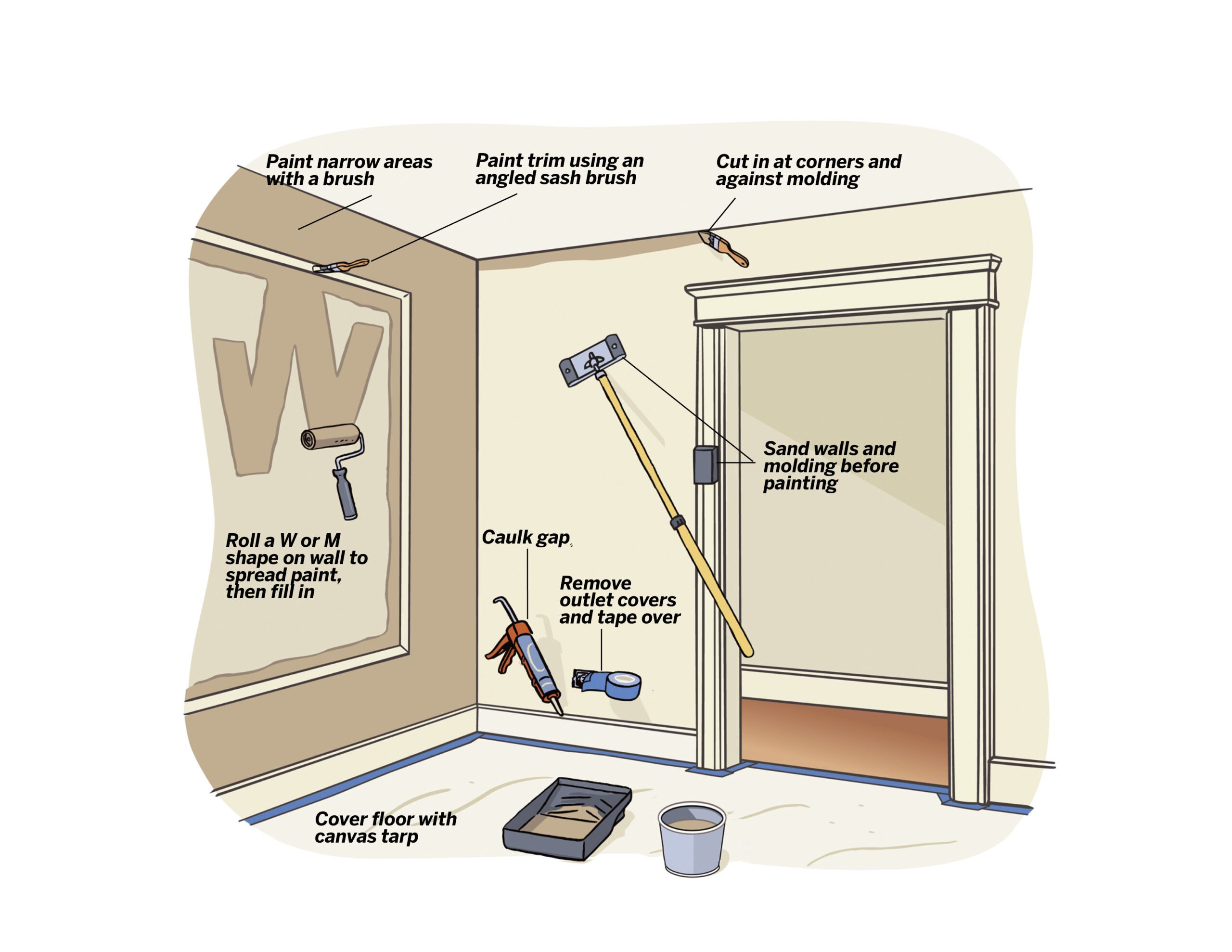
A poorly executed paint job is easy to spot, with its drips and slips and uneven lines. More often than not, haste is the culprit. But with some thorough preparation up front, many of the possible pitfalls will be eliminated—and the actual painting will be much easier, as well. So before you crack your first paint can, schedule in a full day for prep.
Where do you start when painting a room?
Scrape, Patch, and Clean
The best prep starts with sanding and sometimes requires scraping. Sanding scuffs up the existing surface so the paint grabs hold; scraping will take off any old bumps or drips. Be aware of how many layers down there may be lead paint, last sold in the early 1980s; sanding isn’t likely to reveal it, but scraping might. You should also take your time patching holes, caulking gaps, and cleaning dust or grease with soap and water so you start with a pristine surface.
Priming and Sanding Walls Before Painting
If you’re working with new walls, or if you’ve patched any holes before you start, you’ll also need to prime. Primer fills in spongelike pores and creates an even, solid base that takes paint well. You should also prime if you’re going from a dark to a light color or vice versa. (In the latter case, have the paint store tint the primer to go with your wall color. It will save you at least one coat of paint later on.) Primer should also be sanded before the paint goes on the wall; for a top-notch job, sand between paint coats, too.
Use The Right Brush and Strokes
First-time painters tend to tape every edge to guard against misstrokes. But that can bring on its own problems if paint bleeds under the tape or if you peel paint off when removing it. It’s more efficient to use angled brushes, which draw a straight line when turned on edge. Proper use of an angled brush can save you hours of setup and touch-up.
Angled brushes also come in handy for cutting in along corners and ceilings and around trim, where rollers can mark. Fill in a few inches at these spots, then marry the line with the field by rolling over them. Keep a wet edge to avoid dark spots or paint pulls.
As you paint, be sure to keep moving: Put the paint on the wall, level it out where it’s heavy, and get on with it. Don’t use back-and-forth brushstrokes, and don’t spend time making the first coat look perfect (it won’t be). Finally, take a tip from the pros and always keep a damp rag in your pocket to quickly wipe up your mistakes. Even the best painters color outside the lines once in a while.
Step 1: Cover Floors and Hardware

- After removing any wall art and moving furniture away from the walls, lay canvas tarps (more absorbent and less slippery than plastic) over the furniture and on the floor. Using painter’s tape, fasten down the edges.
- Unscrew all switch plates and electrical outlet covers, and tape over the remaining switches and holes with painter’s tape. Tape around any other hardware that can’t be removed.
- After removing electrical covers, put the screws back on the fixtures so they don’t get lost.
Step 2: Sand all Surfaces
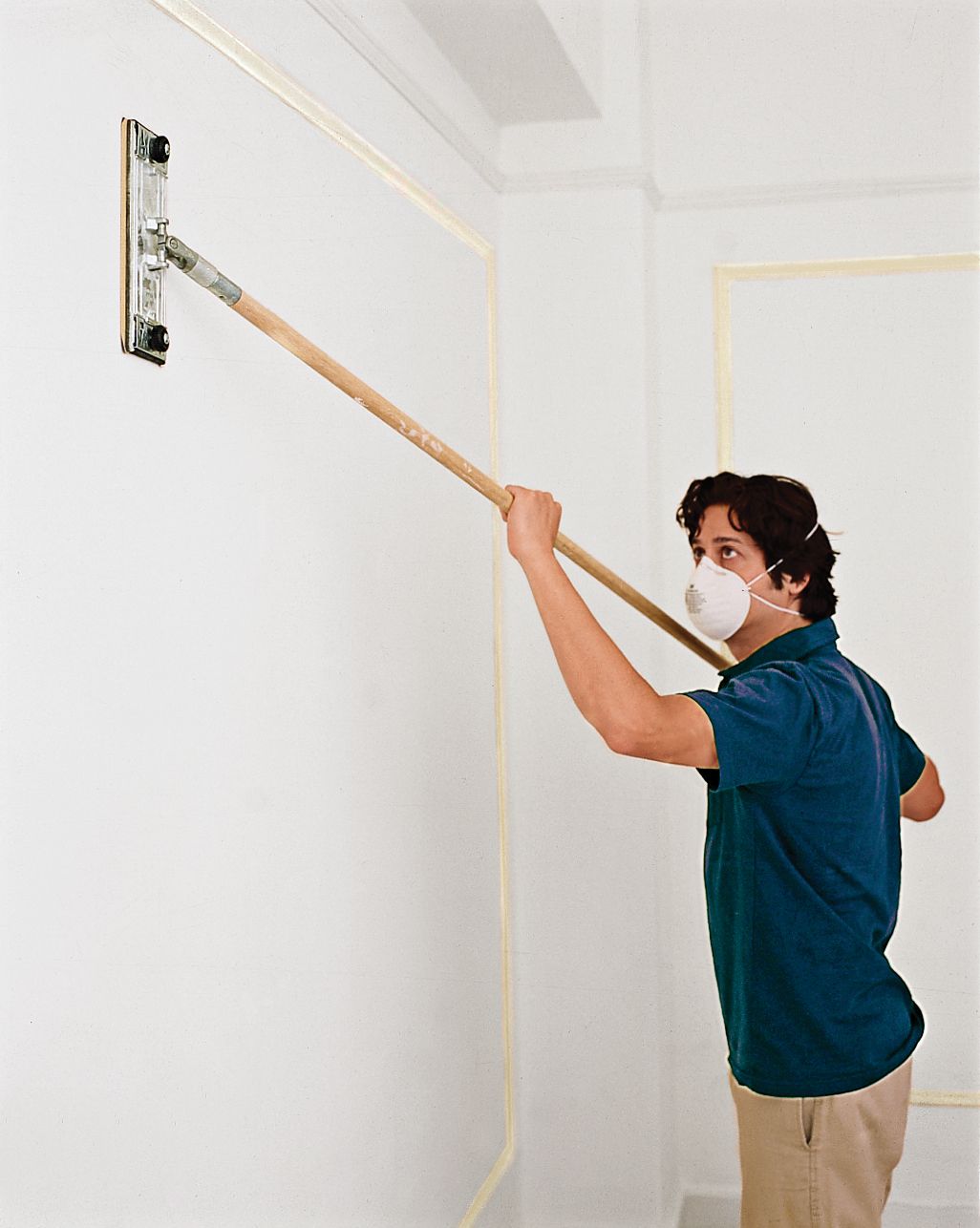
Always sand and paint the ceiling completely (following these same steps) before addressing the walls.
- Using a pole sander fitted with 120-grit paper, sand the walls (make sure to wear a dust mask). Sweep the sander side to side as you work your way from the top down.
- Apply medium pressure, and take care that the head doesn’t flop and gouge the wall. Change the paper whenever the grit gets clogged with dust.
- Remove bumps or drips on painted molding with a scraper. Then, using a dampened coarse-grit sanding sponge, rough up the surface. Keep a bucket of warm water nearby, and continually rinse the sponge. Finish with a dampened fine-grit sponge.
- Using a wet/dry vacuum, clear all the dust from the walls and trim. Wash the walls with a sponge, using warm water and dish soap.
- Scrub greasy or waxy spots. Wipe everything down one last time with clean water
Step 3: Fill Gaps and Holes
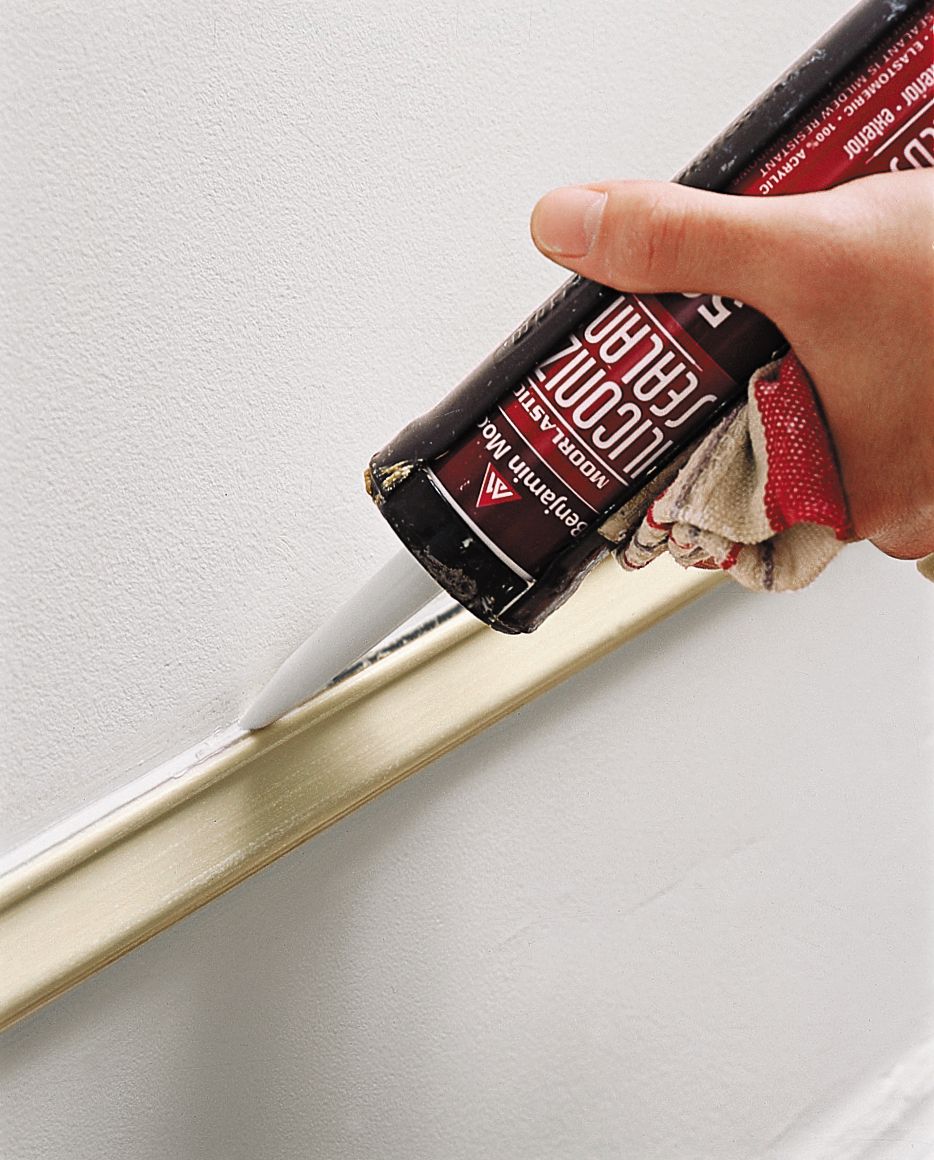
- Run a thin bead of caulk over any gaps where the molding meets the wall.
- Wet your finger and smooth the caulk with even pressure to push it into the crack and leave a crisp edge.
- Using a putty knife, fill any small divots or holes in the walls. Use patching compound for plaster and joint compound for drywall.
- Sand the filler smooth with 120-grit sandpaper.
- Prime the patched spots (or the whole wall if necessary).
- Sand primed areas with 120-grit sandpaper, and wipe clean of dust with a damp sponge.
Step 4: Cut in Around Edges
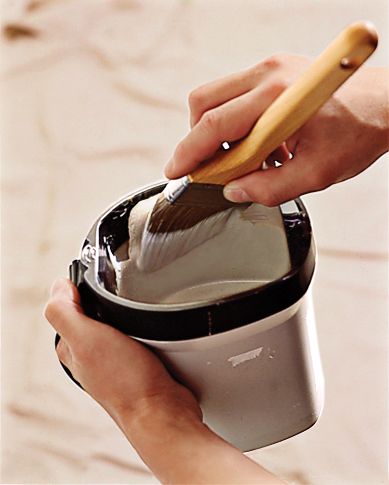
- Dip a 2½-inch angled brush into a bucket of paint, loading the paint only a third of the way up the bristles.
- Tap off—don’t wipe—the excess on the side of the bucket.
- Use the brush to cut in a 2 to 3-inch band of paint at all corners, against the ceiling, and next to molding; this will give the roller some breathing room so it doesn’t bump against adjacent areas.
Step 5: Run a Line of Paint along the Wall
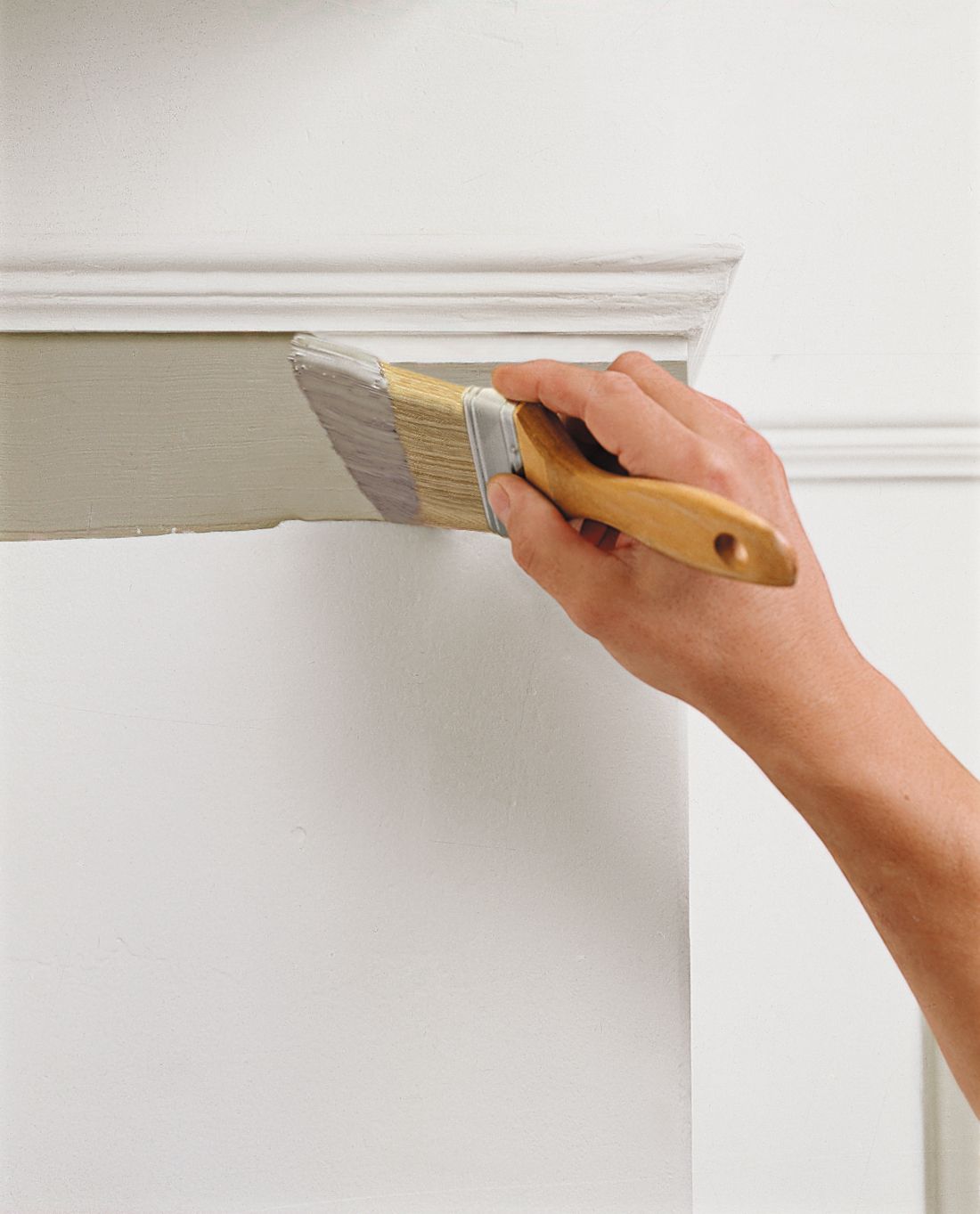
- To cut in, run a line of paint along the wall about an inch away from the edge. Then turn the brush onto the bristle tips, and press down slightly so the longest bristles gather into a point.
- Use this point to draw a careful line of paint right up to the edge where wall meets trim.
- Once you have a clean line in place, level out any heavy areas or drips, then move on. In order to keep a wet edge, don’t work in too large an area at one time.
Step 6: Roll the Walls
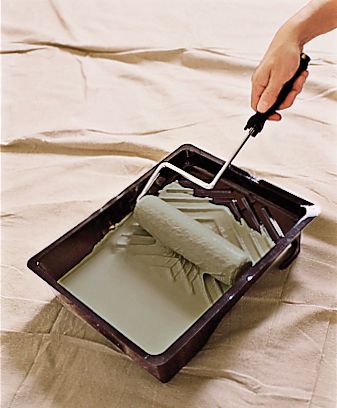
- Once you’ve cut in around an entire wall area, use a roller to fill in the field.
- Dampen the roller before using it (with water for latex paint or paint thinner for oils).
- Dip the roller in a tray filled with just enough paint to reach the grate. Roll it back against the grate to distribute the paint and squeeze out the excess.
- Make sure the roller is covered completely before painting with it.
Step 7: Cover Floors and Hardware

- Roll a W or M shape on the wall to distribute the bulk of the paint. Then use overlapping vertical strokes to spread paint evenly between the lines.
- Continue painting the wall in this manner until it is covered. Overlap a bit of the cut-in edges to blend away any visible brush marks.
- If a second coat is necessary, wait until the paint is dry to the touch, then repeat Steps 5 and 6.
Step 8: Paint the Trim
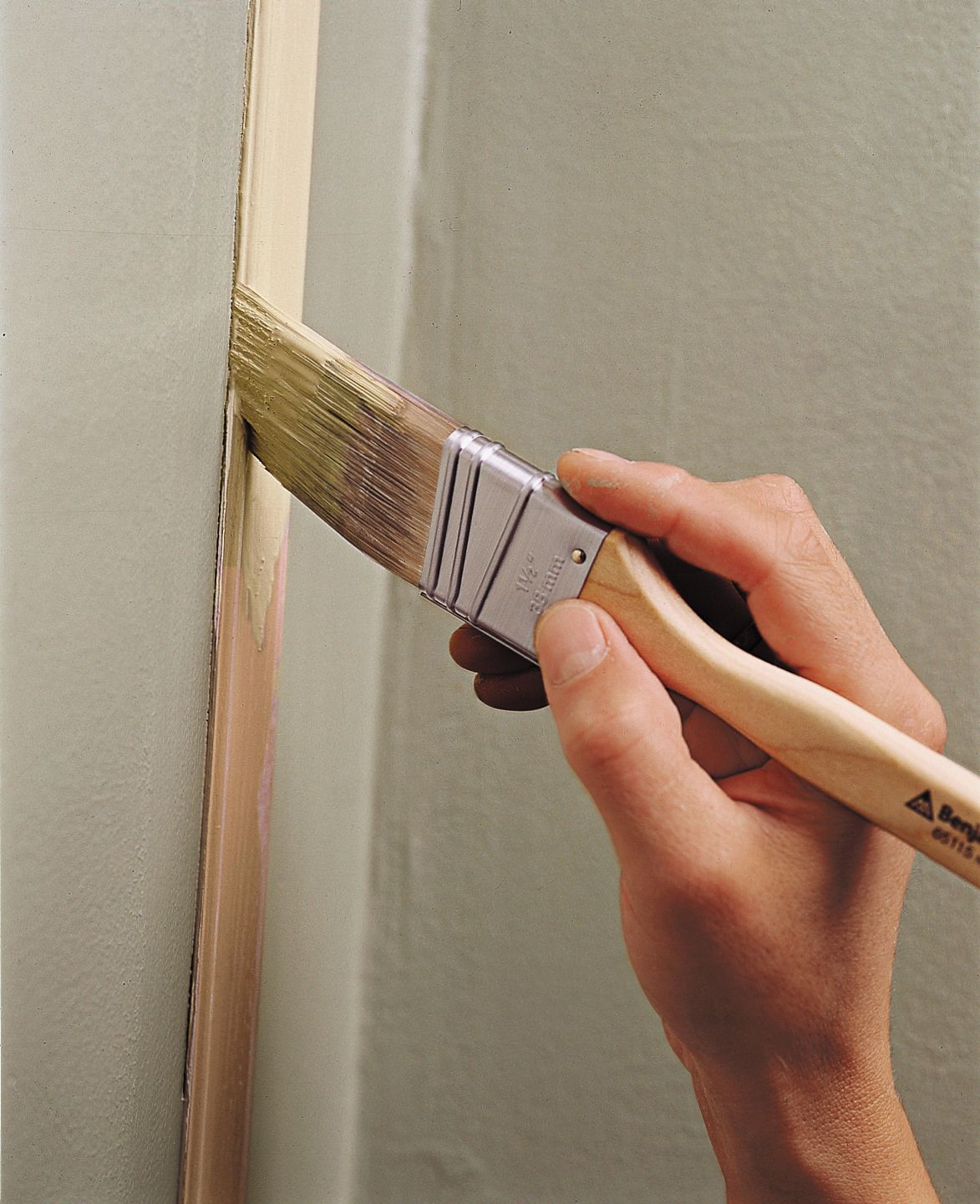
- With broad moldings, such as baseboards and wainscoting, use a wide, straight-edged brush to paint the bulk of the trim.
- Then, using a small, angled sash brush (1- to 2-inch), finish by carefully painting a straight line along the edge.
- Hold the brush on edge as you did in Step 5, and let a hairline of paint carry over onto the wall to make up for any imperfections on the molding itself.
Tools & Materials
 Cordless drill/driver
Cordless drill/driver Paint tray
Paint tray Paint roller
Paint roller Sanding head
Sanding head Paint roller with extension
Paint roller with extension Brush and roller spinner
Brush and roller spinner Wire brush
Wire brush Paint brushes
Paint brushes Putty knife
Putty knife 5-In-1 Painter’s Tool
5-In-1 Painter’s Tool Utility knife
Utility knife Paint scraper
Paint scraper Drywall sander
Drywall sander Caulk gun
Caulk gun Plastic bucket
Plastic bucket Wet/dry vacuum
Wet/dry vacuum Hammer
Hammer Nailset
Nailset
